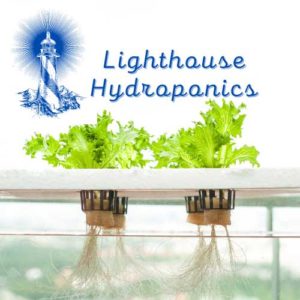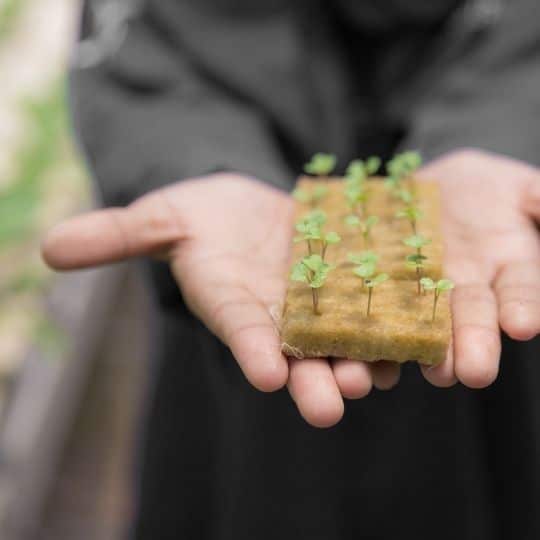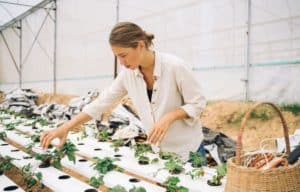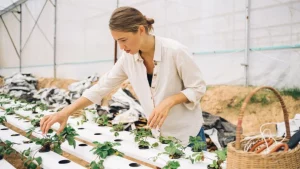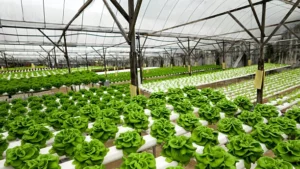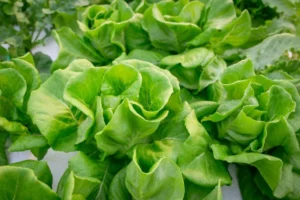The Challenge In Traditional Farming
Before looking deep into the benefits of hydroponics over soil gardening and farming, let’s take a look at the challenges of the traditional ground farming methods.
People have learned how to plant thousands of years ago. Throughout the centuries, traditional farming has helped people have food on their tables. But with the increasing global population, the demand for crops has skyrocketed for the past decades.
Here is the thing. Traditional farming has encountered many challenges despite the creation of modern and innovative techniques. Climate change is one of the never-ending problems that farmers face up to this day. Studies have shown that the intensity of extreme weather, constant changes in temperature, and atmospheric carbon dioxide have significant impacts on yields.
While elevated carbon dioxide increased plant growth in some laboratory experiments, the change in temperature and limited access to water may counteract these yields. Due to the lack of nutrients, the quality of plants will be compromised.
Aside from climate change, pests and insects pose another threat to traditional farming. This is the reason why herbicides, pesticides, and insecticides came into fruition. But experts say these chemicals have been overused since they were introduced into the market. This has resulted in pesticide resistance in which scientists believe there are mutations among the genes of bacteria, making them resistant to chemicals.
Water depletion is another source of headache for farmers. Scientists warn that the freshwater in most regions in the U.S. could decrease in the coming years. The increasing population is one of the factors to blame.
This marked the beginning of horticulture like hydroponics. With its potential to replace traditional farming, people start to switch to this modern planting technique. Still, some are hesitant whether or not hydroponics is an excellent alternative. Worry no more! Below, I present some of the benefits of this type of horticulture. Let’s get started!
1. Hydroponics Is Perfect For Space of All Sizes
If the size of your gardening space is too small, if planting in soil is the only available solution – then what can you do other than just plant less? And it is frustrating to say the least. Luckily, hydroponics changes the rules of the game.
No matter how big or small your yard is, hydroponics is a viable solution. If you are only willing to learn the simple how to (some of which you can find right here on this website, of course) then it is an excellent choice for any gardener!
Unlike traditional gardening, this method of farming does not require a hectare of ground to start with. You can start as small as a single box – as small as a pot.
In soil, the roots of the plant grow longer and deeper in search for nutrients. But in this method, the plant does not send out long roots, because everything it needs is delivered directly to the roots. It’s sort of like the mountain coming to Mohamed.
For that reason, the plant’s root system takes up much less space.
The choice of a suitable hydroponic system should also not be overlooked. With the right choice, you can optimize and maximize your space like a pro.
If you are dealing with a small space, you can choose between a moveable bench system, or a vertical or tiered system – and count on them to serve you well.
A moveable bench system is commonly utilized in commercial greenhouses for many leafy greens.
A vertical system consists of a tower, stacked, or column design. With plants positioned on either side to ensure enough sunlight for all of them.
A tiered system, on the other hand, is another practical way to maximize vertical space. It is ideal for salad greens, culinary herbs, strawberries, and other small plants. It usually uses overhead lamps or natural light.
Even when we are considering much bigger scales and up to industrial farming yielding masses of produce, what hydroponics gives us is the ability to take farming into a literally new level (or levels) by farming in 3D with vertical farming.
If you want to know more about the various plants you can grow with hydroponics, click through to this article.
Watch this video and see what people are doing right now in this area of vertical farming and urban gardening
2. Hydroponics Reduces Water Consumption And Helps Avoid High Utility Bills
Who would have thought that hydroponics would actually conserve water and reduce high electricity bills?
You might be shocked at first since hydroponics uses strictly water to grow the plants rather than soil. But one of the less known and unexpected benefits of hydroponics farming is that it saves water in the end compared to soil farming of similar sizes and yields.
That does not mean you can farm without a balanced amount of water – a limited amount of water can also make your plants wither whereas on the other hand, too much water can cause the plants to rot and die of excess fluids.
As the world population grows, the demand for food grows with it. So, the agricultural sector needs to increase its effort to supply more and more produce. This in turn could result in increasing water consumption.
Studies have shown that growing a head of lettuce traditionally takes at least 3 gallons of water. A head of Broccoli requires more than 5 gallons of water. That’s a lot!
Hydroponics is a popular and effective solution, and experts say that in optimal conditions, farmers can save up to 10 times of water compared to conventional soil farming.
This is no surprise, being that hydroponic systems recirculate the water and use pumps and filters to clean the water.
With the growing population, the use of water is also estimated to increase. According to the Environmental Protection Agency, the average indoor water consumption is 100 gallons per day.
But it is nothing compared to what the U.S uses for crops, irrigation, and weed control.
The latest survey reveals that America had more than 410 billion gallons of freshwater withdrawals in 2005. That’s massive.
This is the reason farmers are switching to hydroponics to ensure sustainability.
If you are in an area with no access to sufficient water, it is time to invest in hydroponics.
See what this rooftop farmer is doing to provide nutrient rich water to his plants:
3. Enjoy Higher Yields
Since it is soil-less, people think hydroponics is at a disadvantage in terms of yield. But the opposite is true.
As Dr. Howard M. Resh states in Hydroponic Food Production, this “non-traditional” farming method allows for higher density planting, which means you can grow more yielding plants in seemingly lesser conditions.
Soya planted in soil, for example, can only yield half the amount of produce compared to hydroponics – That’s a big difference.
With beans, the produce following the traditional method can be as little as a quarter in yield as compared to water-based farming for similar resources.
You will also experience higher yields in other foods like peas, wheat, rice, oats, beets, cucumber, tomatoes, lettuce, cabbage, and potatoes.
But that is not automatic. Proper planting and care are required to achieve such yield.
To enjoy a better output, it is critical to ensure the plant receives sufficient nutrients. Although it sounds quite straightforward, it is challenging and demanding for beginners and even pros.
I also suggest that you journal everything you do in your garden. This makes the process more accurate and measurable, and takes out the guesswork.
4. Faster Crop Growing
It takes time for vegetables and fruits to grow using soil-based farming. For some crops, it takes several months or even more. A plant grown in hydroponics on the other hand, is different. Botanists say it can grow as much as 50% faster than a similar plant in soil.
Why is that you may wonder?
Well, there are several reasons, including:
- nutrient,
- pH manageability,
- effective energy utilization,
- suitable aeration,
- consistent growing condition,
- optimal climate control,
- decreased vulnerability to diseases,
- and the absence of competition for resources.
With soil, various factors can change its pH level. Rain is the simplest example. As a result, the nutrient levels and the toxicity in soil is compromised.
In most systems and with most crops, it is necessary to maintain its pH level between 5.5 and 6.5 for the vegetables to acquire nutrients like potassium. But when it rises to 7 or above, all your veggies will be nutrient deficient.
In a hydroponic garden, it is easier to control the pH level. All you have to do is combine all the necessary ingredients in the water. And there’s no easier way than to go on Amazon and order the right solution, or a specific ingredient when needed.
The aeration in a hydroponic system is also reliable and controllable, thanks to the use of air pumps. Like humans, plants need oxygen in their respiration and biochemical processes. Without sufficient oxygen, they will die.
The climate is another challenge for gardeners, and it requires elaborate systems (usually greenhouses) to be controlled – if it is even possible. Typically, farmers plant based on rain or seasonality. But the weather is not 100% predictable at all times. This may be especially true in times of drought when it doesn’t rain, or when a storm hits, and it rains too much. Either way, your fruits and vegetables will suffer.
With hydroponics, controlling the climate is not as tricky as you think. With the simplest greenhouses or even with balcony gardens, you can maintain the right conditions in terms of temperature, light, and humidity, with easy planning and preparations.
5. It is Not Labor-Intensive
Keeping your own soil-based garden can be quite an ordeal for a lot of amateur gardeners.
It starts with choosing the right plants to grow, in your particular environment and type of soil – whether you want to grow your plants in plants or in the ground. Then, once you’ve chosen what to plant, you have to choose where to grow them. From there, you also have to test the soil, make compost, get rid of weeds, create mulch, and apply herbicides or insecticides.
Admittedly, the process may be daunting for some. But it is certainly satisfying when you finally see them grow. And then, picking your own food and eating your veggies and fruits is a greater joy than you can imagine if you haven’t experienced it for yourself.
But there is nothing to worry about. You can say bye to labor-intensive gardening with hydroponics. There is no tilling, weeding, and herbicide application needed.
In fact, it provides a lighter load for those who have a hectic schedule.
Apart from that, it will help you cut costs on producing crops.
6. A Great Hobby For People of All Ages
Do you find yourself sitting in front of your computer playing your favorite video game or binge-watching the latest TV series?
It is time to learn a new hobby. Building a hydroponic garden in your backyard is as fulfilling an activity as you can ever have.
When you are a bit overwhelmed and stressed about life or work, seeing your greens grow leaves and flowers, can be a lovely mood changer.
I know it can be challenging at first. But once you get the hang of it, it’s “easy peasy”.
See what this woman grows in water – without any elaborate system, in her own kitchen. It’s not proper hydroponics, but we’ll take it to the next level with hydroponic systems for even greater produce and a fun activity for yourself and for your kids or grandchildren if you have them (my own kids love our little “science project garden” and what came out of it).
7. Consume Your Favorite Fruits And Veggies All Year Round
What are your favorite fruits? If you love strawberries and blueberries like me then you’re in for a treat.
But between you and me, when was the last time you ate these berries?
While strawberries are available all year round, they have higher produce in summer. With high supply during that season, they are priced competitively. They also taste fresh and delicious in season.
In winter however, their supply is low. That’s why they can cost an arm or a leg during the cold season. And then, even though they are expensive, they do not taste as good as they do during the summer.
If you crave for some strawberries, but you cannot find one because of the climate, do not despair.
Why don’t you grow your own strawberries in your hydroponic greenhouse?
Even if it is out of season for soil-based berries, you can grow strawberries to your satisfaction in your own back yard.
And if you’re considering growing more than that – to sell on the market or share with your neighbors you can build a strong greenhouse for your berries. While it may require additional costs and a little more effort, it is a worthwhile investment.
So, what’s your favorite advantage of using hydroponics for your garden?
Are you searching for ways to increase your crops, or is conserving water your main concern? Or is it reducing labor and finding a new hobby to pass the time with your loved ones?
There is no need to look further than this type of horticulture! I hope this guide finally helps you reach a decision with confidence!
